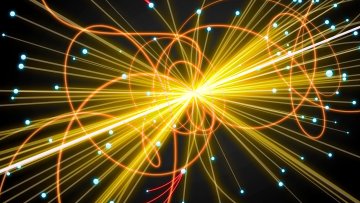12:45
Infrared enhancement of supersymmetry in four dimensions
Abstract
In this seminar I will discuss a recently-found class of RG flows in four dimensions exhibiting enhancement of supersymmetry in the infrared, which provides a lagrangian description of several strongly-coupled N=2 SCFTs. The procedure involves starting from a N=2 SCFT, coupling a chiral multiplet in the adjoint representation of the global symmetry to the moment map of the SCFT and turning on a nilpotent expectation value for this chiral. We show that, combining considerations based on 't Hooft anomaly matching and basic results about the N=2 superconformal algebra, it is possible to understand in detail the mechanism underlying this phenomenon and formulate a simple criterion for supersymmetry enhancement.





